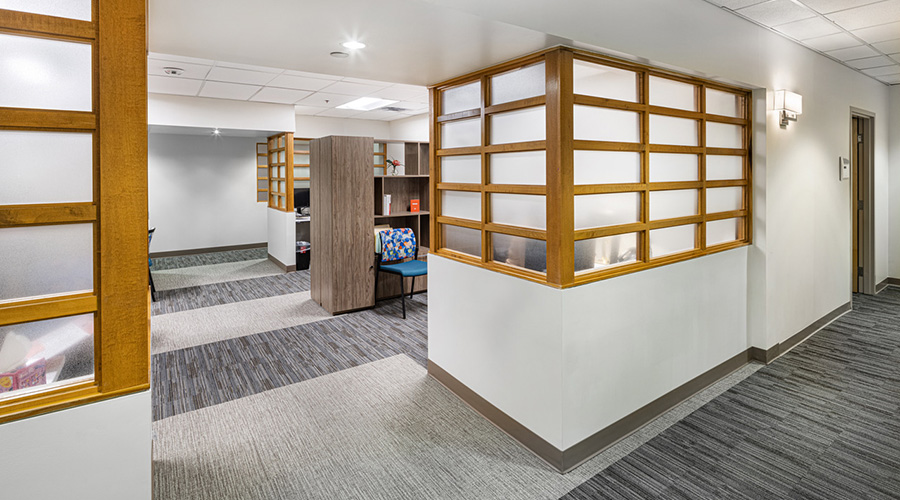Q: Do transaction windows in a smoke-resistive non-rated corridor wall in a healthcare occupancy need be self-closing?
A: It depends on what space the window is open to. Section 19.3.6.1 of the 2012 LSC says corridors (in healthcare occupancies) must be separated from all other areas by partitions (either smoke resistant or ½-hour fire-rated, depending on the sprinkler protection), unless it complies with one of the following exceptions to be open to the corridor:
1. Spaces unlimited in size, provided:
• The smoke compartment is fully protected with quick-response sprinklers;
• The space is not used for patient sleeping rooms, treatment rooms, or hazardous areas;
• The corridor is protected with smoke detectors, or the smoke compartment is protected with QR sprinklers;
• The space is protected with smoke detectors, or the space is arranged to allow direct supervision by staff;
• The space does not obstruct access to required exits.
2. Spaces unlimited in size, provided:
• The space is not used for patient sleeping rooms, treatment rooms, or hazardous areas;
• The space and the corridor are protected with smoke detectors;
• The space is protected with sprinklers, or the furnishings and furniture, in combination with all other combustibles within the area, are of such minimal quantity and arrangement that a fully developed fire is unlikely to occur;
• The space does not obstruct access to required exits.
The presumption here is the space is not a waiting area, a nurse station, a Gift shop, a limited-care facility, a kitchen, or a group meeting room, so those exceptions do not apply.
So, you say it is a transaction window… Let’s assume it is a sliding window to an accounting area where patients can make payments. If the accounting area meets exceptions #1 or #2, then a sliding window that does not resist the passage of smoke or positively latch is permitted. However, you will need to identify on the Life Safety drawings that the corridor wall no longer exists where the sliding window is located but is now located around the back of the accounting area. That means the walls in the back of the accounting area now becomes the corridor walls, and they must meet the requirements for corridor walls (19.2.6.2) and any openings must meet the requirements for corridor doors (19.3.6.3).
It might just be easier to make the sliding window smoke resistant and positive latching.
Brad Keyes, CHSP, is the owner of KEYES Life Safety Compliance, and his expertise is in the management of the Life Safety Program, including the Environment of Care and Emergency Management programs.

 Code Compliance Isn't Enough for Healthcare Resilience
Code Compliance Isn't Enough for Healthcare Resilience Ribbon Cutting Marks First Phase Completion for New Montefiore Einstein Facility
Ribbon Cutting Marks First Phase Completion for New Montefiore Einstein Facility Brooks Rehabilitation Launches 3 New Major Construction Projects
Brooks Rehabilitation Launches 3 New Major Construction Projects Joint Commission Standards: What Updates Matter Most?
Joint Commission Standards: What Updates Matter Most? Swinerton Completes Construction at Atlanta's Grady Hospital
Swinerton Completes Construction at Atlanta's Grady Hospital